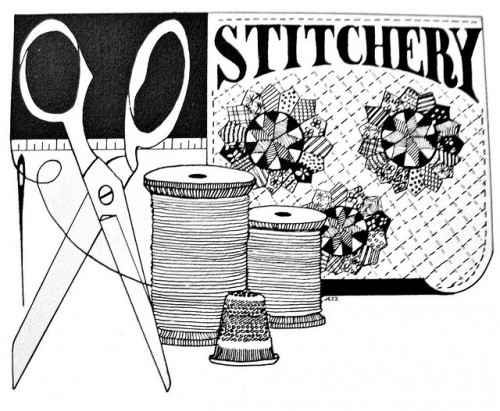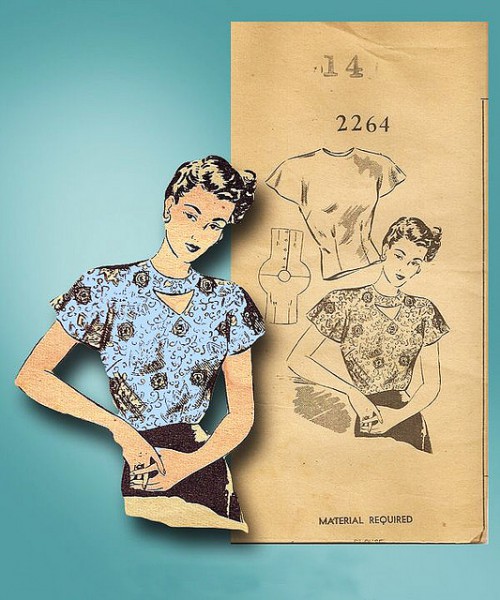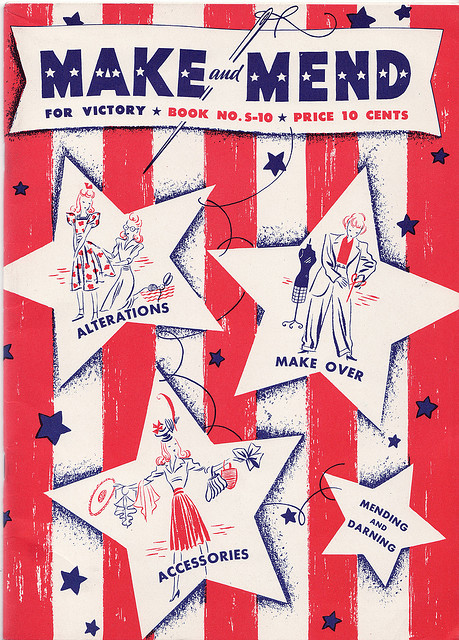Building Your Sewing Vocabulary

Photo by themissiah
We’ve gone over some sewing vocabulary with the post on Fabric Terms. In order to help you brush up on your sewing vocabulary, we’ve continued with some frequently used words. Are there any words or terms that continue to stump you? Let us know! We’d love to help out. In the meantime, here’s a handy list of sewing terms for you to reference:
Armscye is the sewing term for armhole. It’s pronounced arm-sigh.
Applique usually refers to small piece of decorative material that’s sewn on top of fashion fabric either by hand or machine. This tutorial shows how to apply lace applique.
A back tack is simply stitching forward then backward as you being a seam. This reinforces the edge of the seam to prevent the stitches from unraveling.
To baste, you use a basting stitch which is a long and loose stitch made by either hand or machine. A basting stitch can also be used for easy gathering.
Sewing ease or easing is when you sew a piece of fabric larger than the other together, such as attaching a sleeve, without any gathering or puckers.

Photo by carbonated
Facings are sewn to the edge of the garment and turned under to create a professional finish. They are most often used on necklines, sleeveless garments and waistbands.
Gathering fabric means you sew two or three basting lines across the marked area, pull the bobbin thread and push the fabric so it creates a kind of ruffle.
A placket is finished opening on a garment. For example the cuff of the long sleeve on the Negroni has a placket. This opens and closes to allow the hand through.
Ruching is fabric gathered in a seam for decoration.

Photo by felicity wormword
Seam allowance refers to the amount of space from the sewing line of the pattern. Most commercial patterns have 5/8″ seam allowance.
Slip stitch is done by hand and is relatively invisible. It’s often used when hemming a skirt.
Curves require stay stitching which is a permanent line of stitching within the seam allowance about 1/8″ away from the sewing line. Stay stitching keeps the curve from stretching out and becoming distorted.
Topstitching is a decorative stitch usually sewn with thick topstitching thread.
Understitching is when facing or lining is sewn to the seam allowance, keeping the facing or lining in place. This tutorial shows how you can easily understitch your facings.

 Sign In
Sign In

Comments
Carlotta Stermaria
May 17, 2011 #
Thank you for this post!
I’m mostly self-taught and as the online resources are much more important in English, I’ve noticed that my sewing vocabulary is now larger in English than in French (as an example, I have no idea on how I should call a lapped seam or a felled seam in my mother tongue), but it’s mostly by guessing… It’s great to read some precise definitions like those, or such as Tasia’s sewtionnary.
One thing that would be great is an international sewing dictionnary, but I guess this would be very complicated to organize!
Tabatha Tweedie
May 17, 2011 #
I’d always wondered how to pronounce ‘armscye’ – thanks!
R.M. Koske
May 17, 2011 #
Armscye sometimes shows up on lists of “really old words you’ve never heard of we don’t use anymore,” which always makes me laugh.
Stephanie
May 17, 2011 #
Very nice! I’m a self taught sewer, so I can’t tell you how many times I’ve come across and unfamiliar sewing term and rushed in a panic to google to figure out what it was.
Danielle
August 12, 2011 #
fusible interfacing? So would that be the facing on the inside?
This site is so helpful!
Caitlin
August 12, 2011 #
Danielle, interfacing is a material that is either fused (via ironing) or sewn to a piece of fabric to strengthen it. It is often used on facings. This Wikipedia entry gives you a little more info: http://en.wikipedia.org/wiki/Interfacing
Mary
October 8, 2013 #
It’s in point of fact a nice and helpful piece
of information. I’m happy that you shared this helpful info with us.
Please stay us informed like this. Thank you for
sharing.
sandi palmer
February 9, 2014 #
There are several types of threads. Some are self explanatory and then the others are very confusing. I recently bought a new computerized sewing machine and don’t want to damage it. Could you please explain some of the more unusual threads?